The core highlight of LinkedIn Scraping is that it can unlock many opportunities for businesses, marketers, and researchers. The platform is a treasure trove of professional data that can provide insights into industries, markets, and talent pools.
However, accessing this valuable information has one key requirement: You must first learn how to scrape LinkedIn, or at least be familiar with some LinkedIn scraping tools. In addition, know that by using proxies, you’ll be able to go beyond simple scraping.

Disclaimer: This material has been developed strictly for informational purposes. It does not constitute an endorsement of any activities (including illegal activities), products, or services. You are solely responsible for complying with the applicable laws, including intellectual property laws when using our services or relying on any information herein. We do not accept any liability for damage arising from using our services or information contained herein in any manner whatsoever except where explicitly required by law.
Table of Contents
- What is LinkedIn Scraping and Why It’s Worthwhile
- How LinkedIn Scraping Works
- Types of Tools That Work for Linked Scraping
- Recommended LinkedIn Scrapers
- Common Challenges in LinkedIn Scraping
- Ethical and Legal Considerations
- Conclusion
1. What is LinkedIn Scraping and Why It’s Worthwhile
LinkedIn scraping is web scraping that aims to extract data from LinkedIn’s vast network. This data can include professional profiles, employment history, educational background, skills, and network connections.
It’s akin to mining in a digital landscape, where the extracted data is a rich resource for various analytical purposes. You’ll discover a diverse data field that can help with lead generation, market research, talent acquisition, and more. For example:
- Sales teams leverage it to identify potential clients
- Marketers use it for audience insights
- Recruiters find top talent.
- Academics and researchers can analyze industry trends
- Job seekers can understand skill demands in their field.
2. How LinkedIn Scraping Works
One of the most beautiful aspects of LinkedIn scraping is that you can do it using various techniques. Each has its own set of advantages and challenges. Understanding these methods is crucial in selecting the right approach for your data needs.
- Manual scraping is safe but limited in scale.
- Automated tools offer efficiency but come with higher risks.
- API-based scraping is secure and compliant but limited in data access.
a. Manual Scraping: The Human Touch
Manual scraping on LinkedIn starts with logging into your account and identifying the profiles, companies, or groups you want to scrape.
This method involves navigating each target and manually copying necessary information, such as names, titles, and contact details. The collected data is then pasted into a structured format like a spreadsheet or a database.
An essential part of this process is verifying the accuracy of the data to ensure its reliability. Since manual scraping is time and labor-intensive, it’s most suitable for small data sets. It minimizes the risk of violating LinkedIn’s terms of service.
However, the accuracy and comprehensiveness of the data collected depend heavily on the diligence of the individual performing the scraping.
| Pros | Cons |
|---|---|
| High accuracy and quality of data. | Extremely time-consuming. |
| Low risk of violating LinkedIn’s terms of service. | Not suitable for large-scale data collection. |
| Offers a more ethical approach. | Relies heavily on human effort and can be error-prone. |
b. Automated Scraping: Efficiency at Scale
Automated scraping involves choosing and setting up a tool tailored to specific data requirements. Once configured, this tool navigates LinkedIn automatically, extracting specified data types. The tool then collects and stores this data in a predefined format.
After scraping, the data often requires cleaning and organization for further analysis. Automated scraping is much faster and more efficient than manual methods, making it suitable for large-scale data collection.
However, this method carries risks, including the potential detection by LinkedIn, which can lead to account restrictions or bans. Therefore, you must consider the ethical and legal implications of using automated tools for mass data collection.
| Pros | Cons |
|---|---|
| Fast and efficient for large volumes of data. | Higher risk of detection and potential LinkedIn penalties. |
| Requires less human effort after initial setup. | Ethical and legal implications. |
| Can gather a wide range of data types. | May require maintenance and updates to scraping scripts or tools. |
c. API-Based Scraping: The Official Route
API-based scraping on LinkedIn is possibly the least well-known method to the public. It begins with obtaining access to LinkedIn’s API. Developers then create an application that uses this API to request specific data types and profiles.
The API processes these requests and responds with the requested data in a structured format, which can then be integrated into various systems for analysis and use. This method fully complies with LinkedIn’s terms, offering a legitimate way to access data.
However, LinkedIn is limited by the type and amount of data it allows through its API and requires technical expertise to set up and use effectively. API-based scraping is the most secure and compliant method but offers less flexibility in data extraction.
| Pros | Cons |
|---|---|
| Fully compliant with LinkedIn’s terms. | Limited by the type and amount of data LinkedIn allows through its API. |
| Offers reliable and legitimate data access. | Requires technical knowledge and setup. |
| Generally secure and stable. | May not meet needs for comprehensive data scraping. |
3. Types of Tools That Work for LinkedIn Scraping
Given that there are several broad methods for LinkedIn scraping, it shouldn’t be surprising that there are also many tools. These cater to different needs and complexities of data extraction.
- Browser Extensions: Simple and user-friendly, these extensions can be added to browsers for basic scraping tasks. Ideal for individuals or small businesses needing quick access to data without extensive technical setup.
- Dedicated Scraping Software: More sophisticated than browser extensions, these software solutions offer advanced features like data filtering, automated workflows, and large-scale data extraction.
- Custom Scripts and Bots: For tech-savvy users. Custom scripts written in programming languages like Python or JavaScript offer the highest level of customization and control. They are excellent for specific, complex scraping tasks.
- Cloud-based Scraping Services: These services provide a platform for scraping, offering scalability and reliability. They often come with user-friendly interfaces and additional data processing capabilities – at a price.
4. Recommended LinkedIn Scraping Tools
There are many LinkedIn scraping tools generally available online. Some are built specifically for the platform, while others are more generic and will work with almost any service. We chose each tool for its unique features, ease of use, and reliability for these recommendations.
a. Octoparse
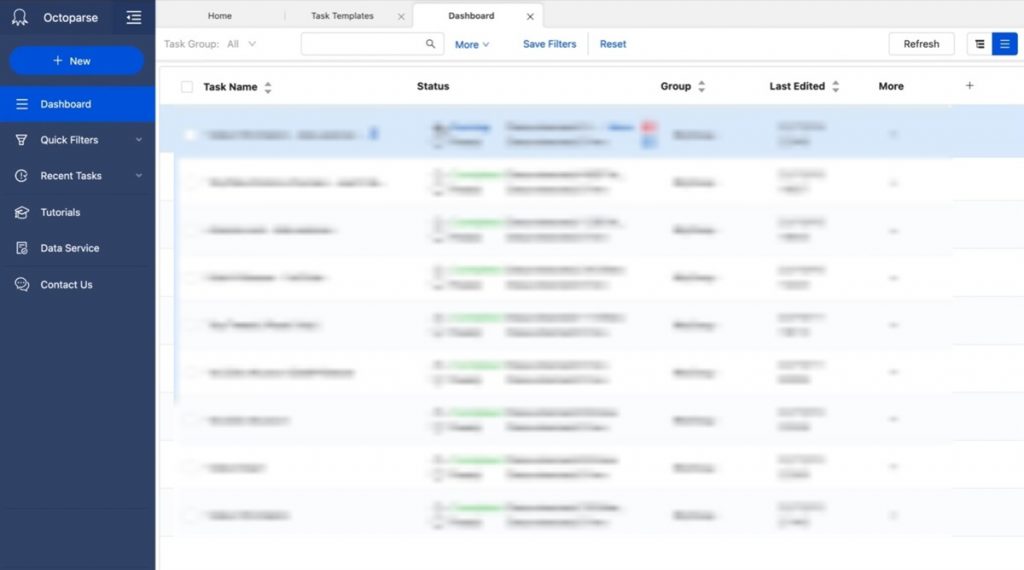
- Easy-to-use interface with a point-and-click setup.
- Advanced features like scheduled scraping and cloud-based extraction.
- Supports both structured and unstructured data.
Octoparse is a versatile web scraping tool with a beginner-friendly interface. It’s also highly competent and can handle large-scale data extraction. Best of all, you don’t need any coding skills.
The tool allows for the visual building of the scraper within an embedded browser. That means you can select data elements easily. Its high-speed mode (professional plans only) also significantly increases data extraction speeds.
You can have Octoparse extract data in over 20 output formats, including Excel, CSV, JSON, MySQL, and MongoDB.
Octoparse offers a cloud-based solution that is accessible on Windows but does not have a mobile application. It caters to a wide range of customer sizes, from individual consumers to large enterprises.
b. ScrapingBee
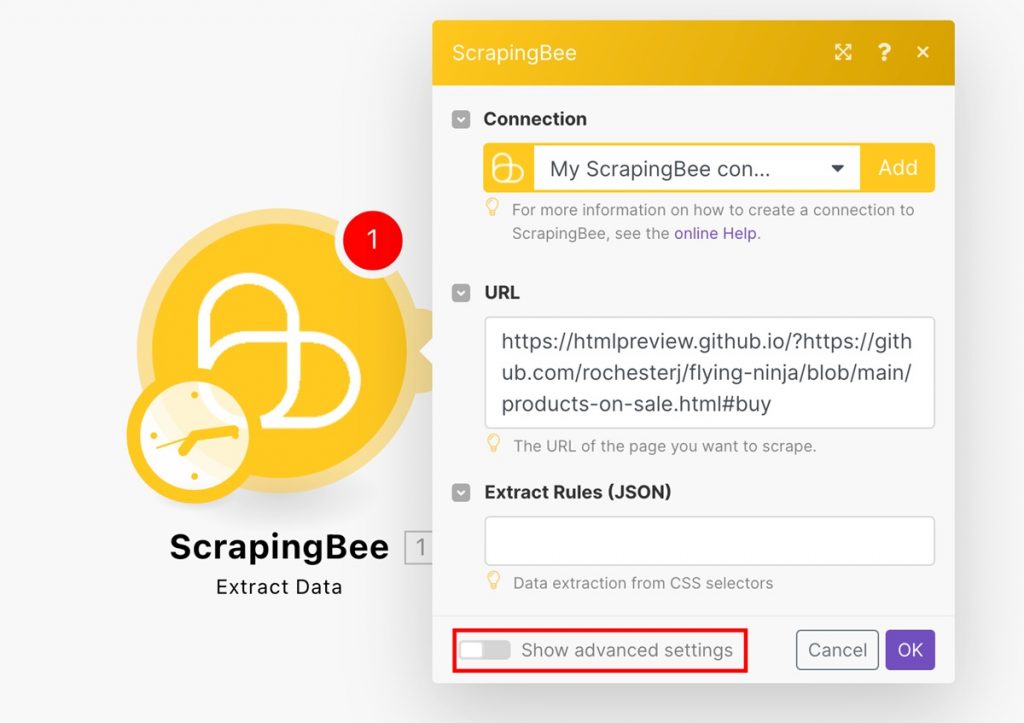
- Handles JavaScript rendering, essential for dynamic websites like LinkedIn.
- Offers a large pool of proxies to avoid IP bans.
- Provides API access for easy integration into existing systems.
ScrapingBee is a cloud-based scraping tool known for handling headless browsers and rotating proxies, making it robust for scraping sites like LinkedIn. It is adept at handling JavaScript rendering, which is crucial for dynamic websites.
Most importantly, ScrapingBee comes with a large pool of proxies to circumvent IP bans. The tool provides API access, making integrating into existing systems easier for users with technical backgrounds.
The only downside is that you will need some understanding of API usage.
c. PhantomBuster
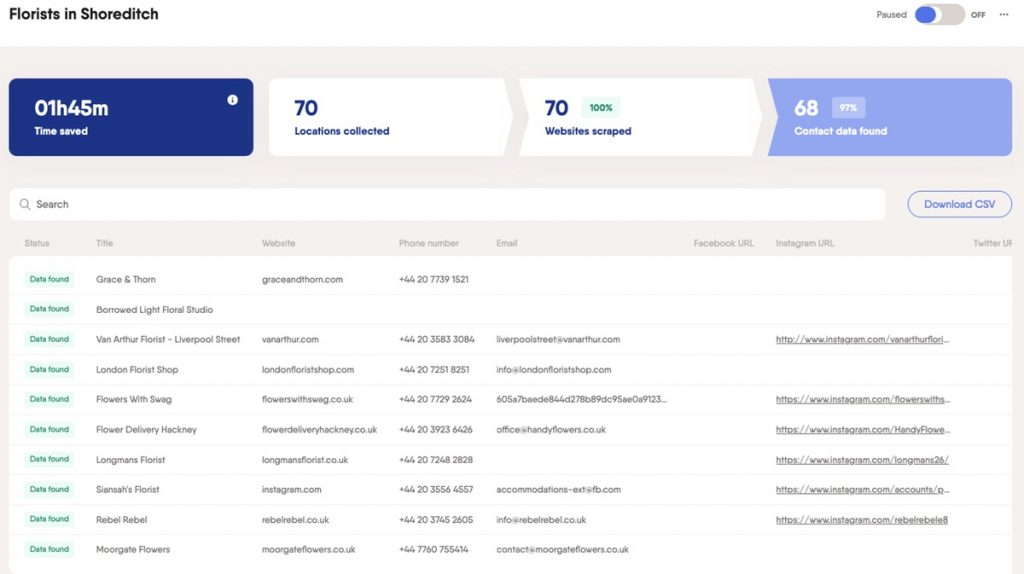
- Offers a suite of automation tools for LinkedIn.
- Cloud execution and scheduling features.
- Provides integration options with services like Google Sheets and Zapier.
PhantomBuster is Cloud-based and excels in LinkedIn scraping. It’s designed to be much more than a simple data extraction tool; it offers a suite of “Phantoms,” or automated agents, each specialized for different platforms and tasks.
PhantomBuster provides functionalities like profile scraping, network boosting, and automated messaging for LinkedIn. These features are helpful for specialized data extraction and can accurately meet roles like marketing and recruitment.
The tool’s integration capabilities, such as connecting with Google Sheets and Zapier, add to its flexibility, allowing users to streamline their workflows. PhantomBuster’s user interface is intuitive, making it accessible for users of varying technical skills.
d. Webscraper.io
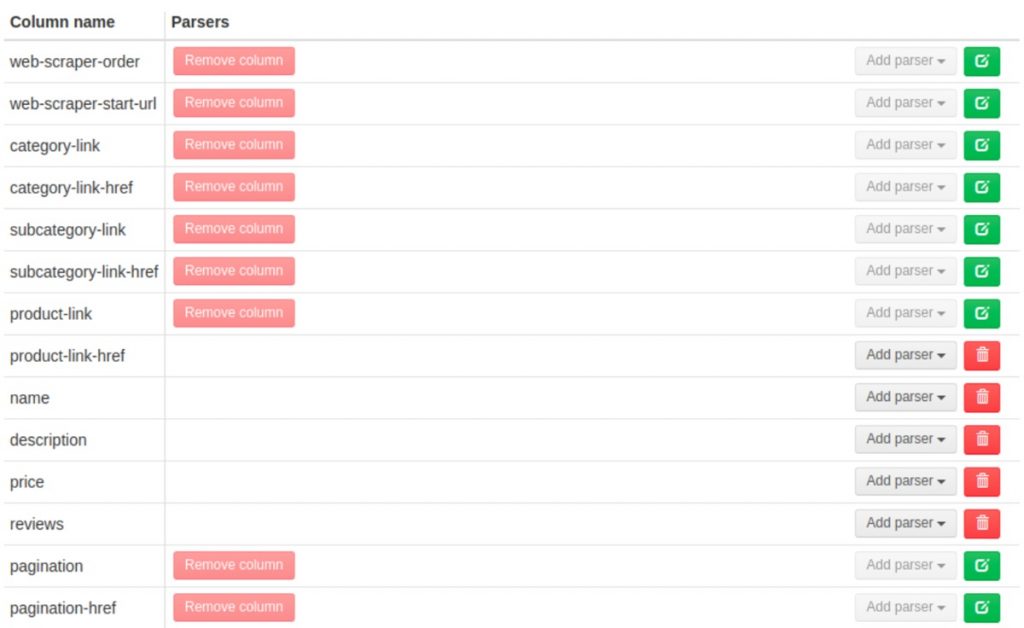
- User-friendly interface integrated into the browser.
- Utilizes sitemaps to navigate and scrape data.
- Exports data in CSV format.
Webscraper.io comes as a browser extension for Chrome. That makes it a LinkedIn scraping tool that even Mac users can capitalize on. It uses sitemaps to navigate and scrape data, allowing you to plan and execute your scraping tasks methodically.
This approach is particularly advantageous for those who need to scrape structured data across multiple pages. Webscraper.io is ideal if you’re looking for a straightforward, no-frills tool for small to medium-sized scraping projects.
Its ability to export data in CSV format makes it easy to work with the extracted data in applications like Excel.
e. Dripify
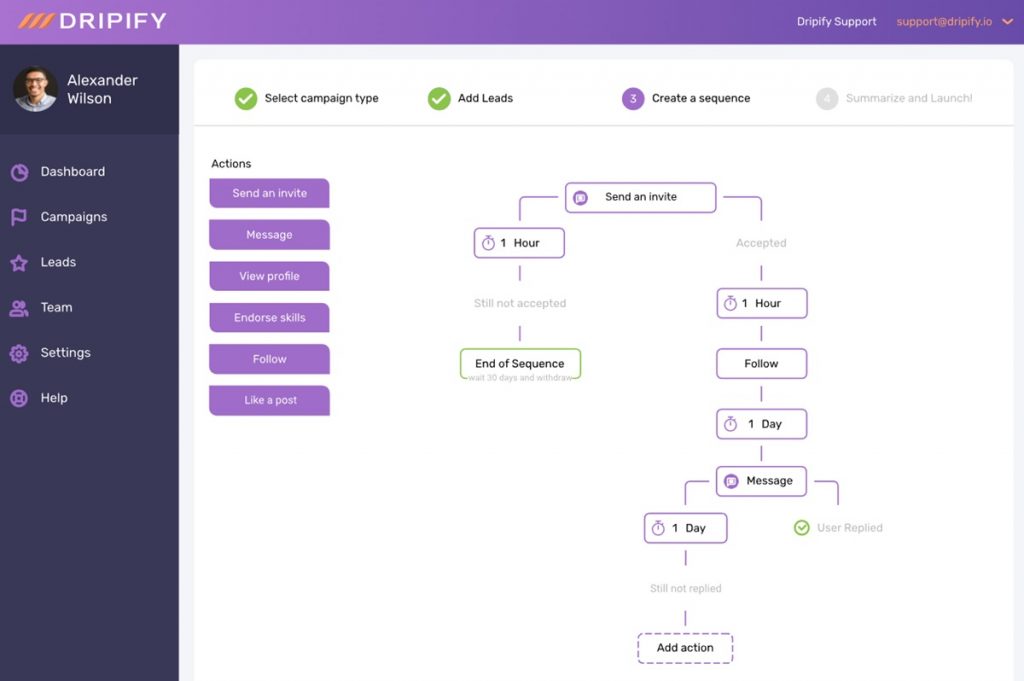
- Automated sales funnel creation on LinkedIn.
- Advanced analytics for LinkedIn performance.
- Lead generation and nurturing capabilities.
Dripify is an advanced LinkedIn automation and lead generation tool that simplifies LinkedIn data scraping. It lets you set up sales funnels quickly and automate various LinkedIn actions. It also doesn’t require technical expertise to use.
Key features include automated sales funnel creation, advanced analytics, lead nurturing, and team management capabilities. The tool suits digital marketers, marketing agencies, businesses of all sizes, entrepreneurs, and anyone looking to enhance their lead-generation efforts.
5. Common Challenges in LinkedIn Scraping
Scraping LinkedIn data can be challenging, but these can be effectively managed with the right strategies. While we’ve cobbled together some of the more well-known issues, be forewarned that scraping almost always comes up with surprises.
- Dealing with Anti-Scraping Measures: LinkedIn uses advanced techniques to detect and block scrapers. To avoid detection, use rotating proxies, scrape at a human-like pace, and mimic human behavior in your scraping scripts.
- Handling Data Structure Changes: LinkedIn periodically updates its site layout, which can break scrapers. Regularly monitor your scraping tools and adapt them to accommodate website structure changes.
- Managing Large Data Sets: Scraping large volumes of data can be challenging. Utilize cloud-based storage solutions and robust data management practices to efficiently handle and process big data.
- Ensuring Data Accuracy: Verifying the accuracy of scraped data is crucial. Implement checks within your scraping process to validate data and ensure its relevance and correctness.
- Adhering to Legal and Ethical Standards: Always scrape data within legal and ethical guidelines. Understand and comply with LinkedIn’s terms of service, and be mindful of data privacy laws like GDPR.
- Technical Challenges: Scraping LinkedIn requires some technical know-how. If you need more technical expertise, consider using user-friendly scraping tools or hiring professionals with scraping experience.
6. Ethical and Legal Considerations
Data scraping is a potent method of gathering intelligence. However, alongside this power comes the responsibility of navigating a complex web of ethical and legal considerations. To ensure you don’t get in trouble:
- Respect LinkedIn’s Terms of Service: LinkedIn has specific terms restricting certain scraping activities. Violating these can lead to legal repercussions and account bans.
- Compliance with Data Privacy Laws: Laws like GDPR in the EU impose strict rules on personal data handling. Ensure you have the right to use the data you scrape, especially if it contains personal information.
- Ethical Use of Data: Always use scraped data in a way that respects the privacy and rights of individuals. Avoid using data for misleading, harmful, or deceptive practices.
- Transparency and Consent: Whenever possible, be transparent about your data collection methods and obtain consent from individuals whose data you are scraping.
- Avoiding Overburdening LinkedIn’s Servers: Responsible scraping practices should ensure they don’t overload LinkedIn servers. This can disrupt the regular operations of the service for others.
7. Conclusion
Mastering LinkedIn scraping involves navigating various methods, tools, and ethical considerations. While manual, automated, and API-based scraping offer unique advantages, choosing the method that aligns with your objectives and legal constraints is crucial.
Many tools like Octoparse and Dripify can significantly enhance your scraping efficiency. However, handling scraped data responsibly is vital. Always remember to adhere to privacy laws and ethical standards.
0Comments